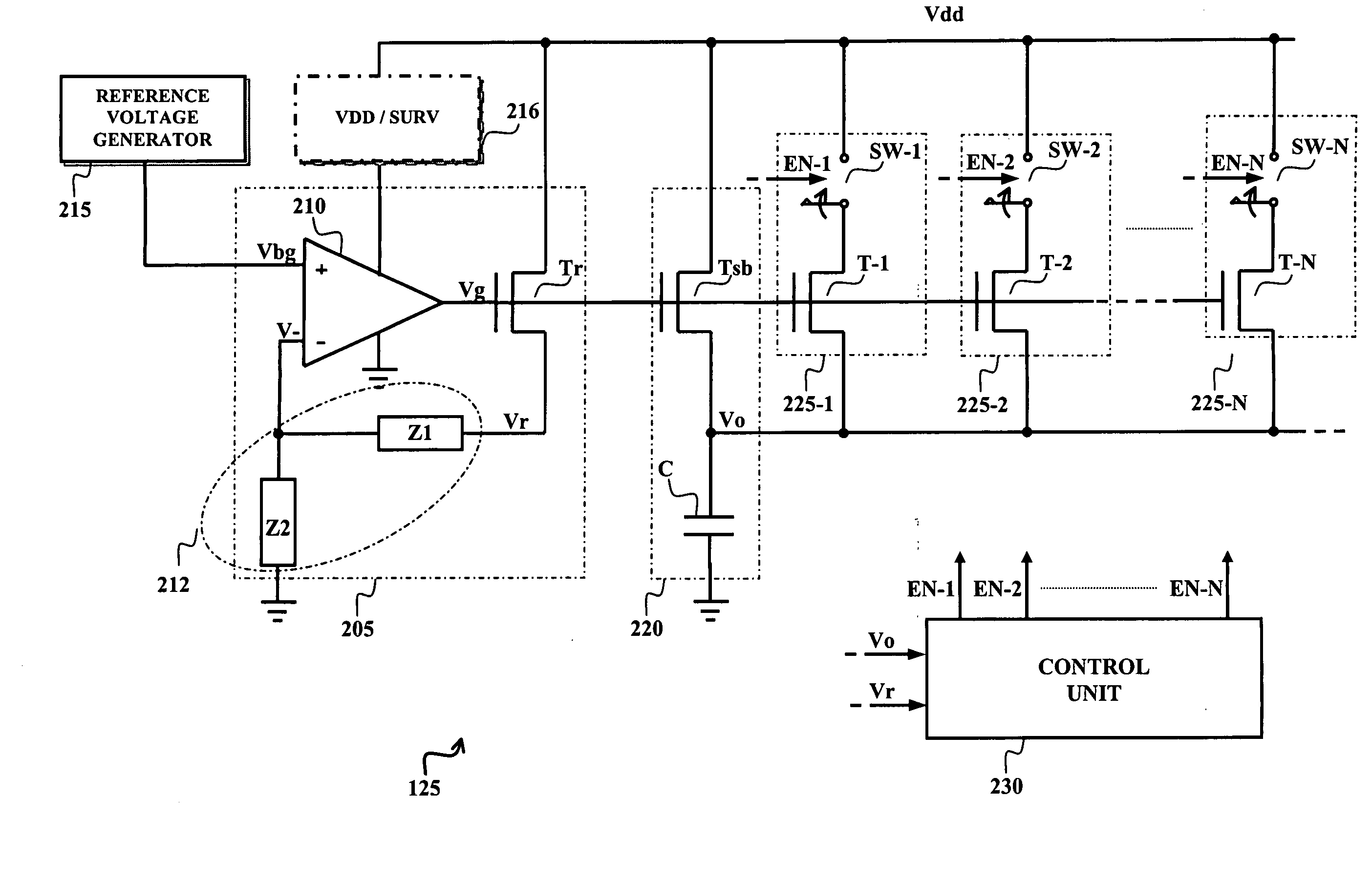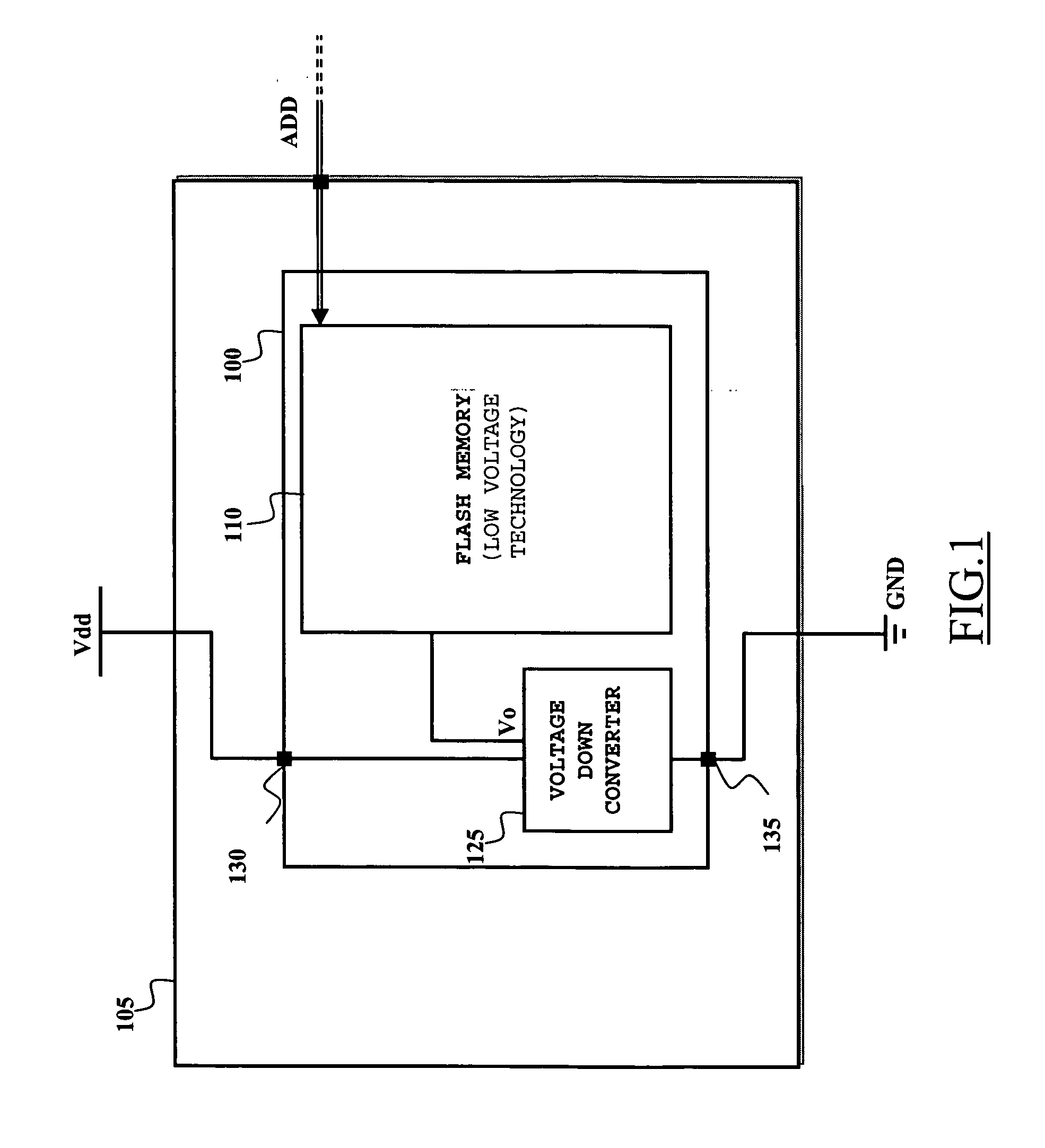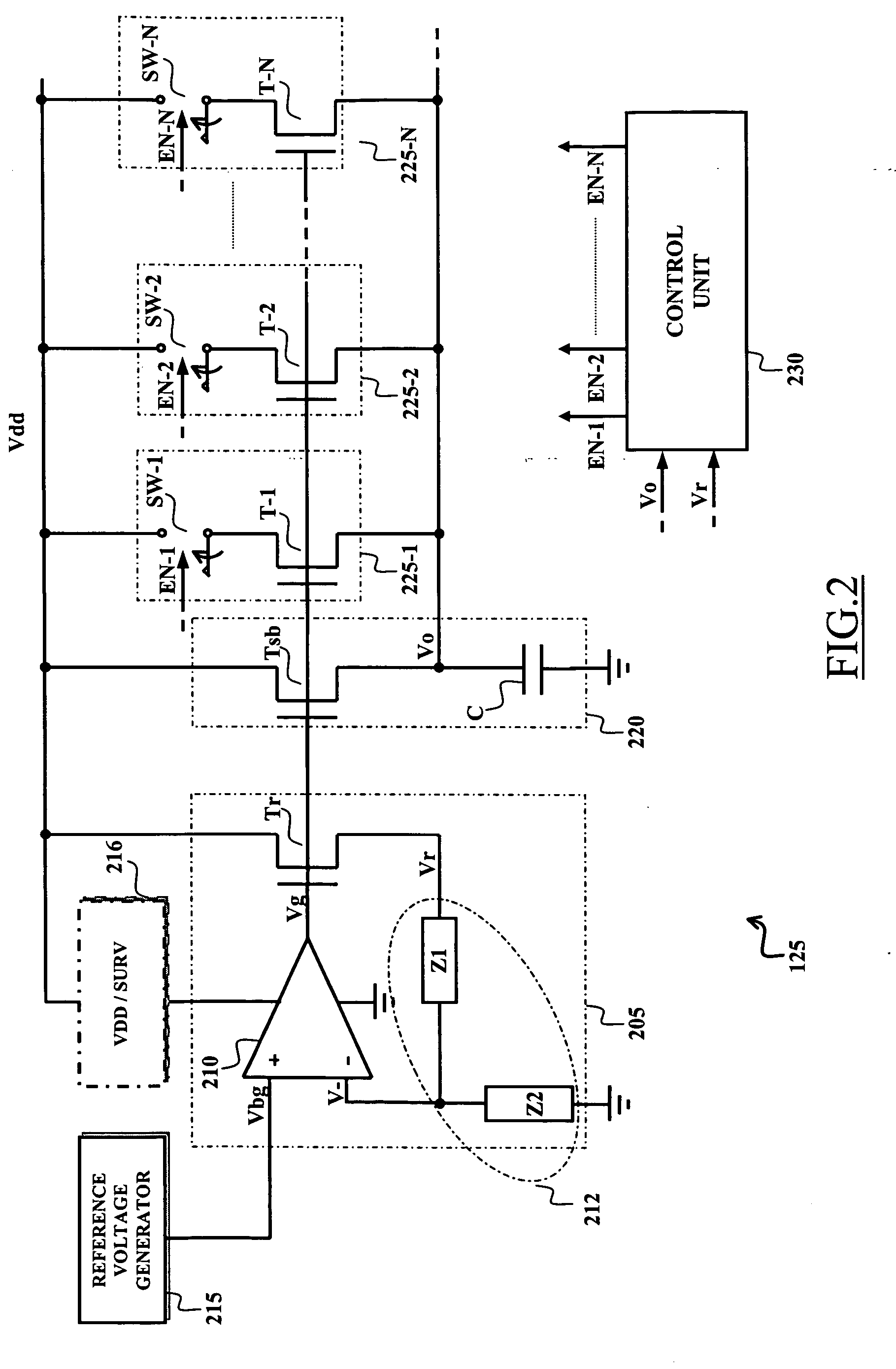Voltage down converter
a voltage converter and converter circuit technology, applied in the direction of electric variable regulation, static storage, instruments, etc., can solve the problems of low response speed, unstable output voltage, and the inability of the voltage converter circuit to track the relatively fast changes in the requested current, and achieve the effect of low response tim
- Summary
- Abstract
- Description
- Claims
- Application Information
AI Technical Summary
Benefits of technology
Problems solved by technology
Method used
Image
Examples
Embodiment Construction
[0024] Preferred embodiments of the present invention will be described in detail hereinbelow with reference to the attached drawings.
[0025]FIG. 1 illustrates an integrated circuit 100 comprising a semiconductor memory device, particularly a non-volatile semiconductor memory 110, realized in a low-voltage manufacturing technology (for example, an E2PROM of flash type). The integrated circuit 100 is integrated in a chip 105 of semiconductor material. The flash memory 110 typically includes a matrix of memory cells (for example consisting of floating gate MOS transistors), and a variety of circuit blocks such as decoders used to select the memory cells (for example in response to a corresponding address ADD received from the outside), and read / write circuits that are used to read / update the contents of the selected memory cells. Particularly, the read / write circuits include the components necessary to execute read and write (and, possibly, erase) operations on the selected memory cel...
PUM
 Login to View More
Login to View More Abstract
Description
Claims
Application Information
 Login to View More
Login to View More - R&D
- Intellectual Property
- Life Sciences
- Materials
- Tech Scout
- Unparalleled Data Quality
- Higher Quality Content
- 60% Fewer Hallucinations
Browse by: Latest US Patents, China's latest patents, Technical Efficacy Thesaurus, Application Domain, Technology Topic, Popular Technical Reports.
© 2025 PatSnap. All rights reserved.Legal|Privacy policy|Modern Slavery Act Transparency Statement|Sitemap|About US| Contact US: help@patsnap.com



